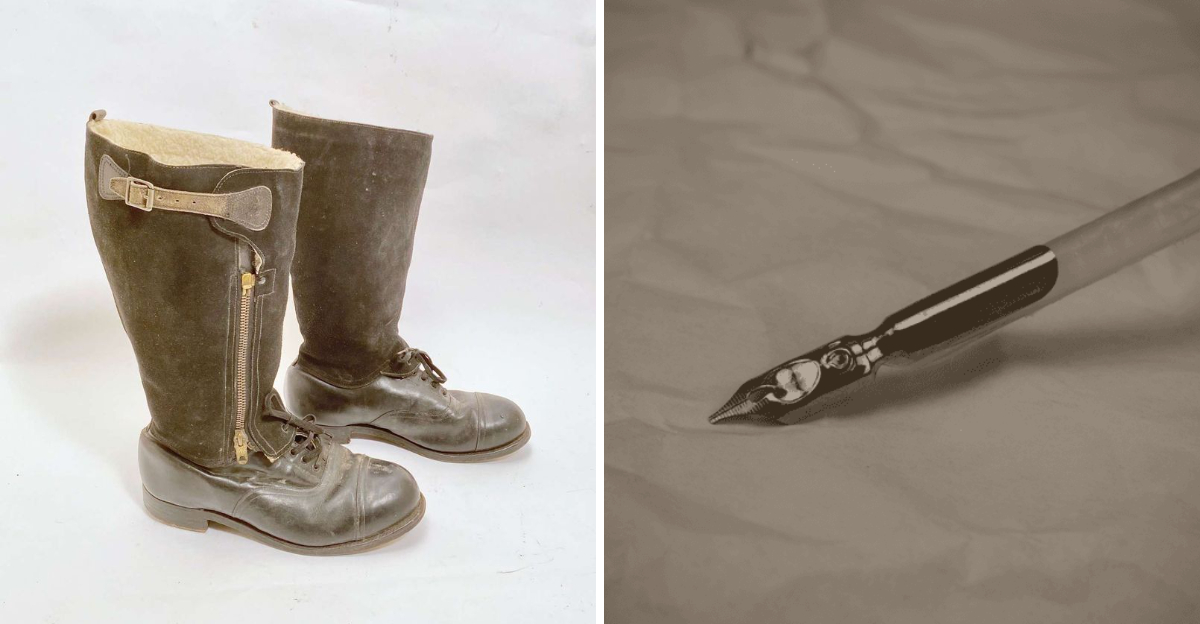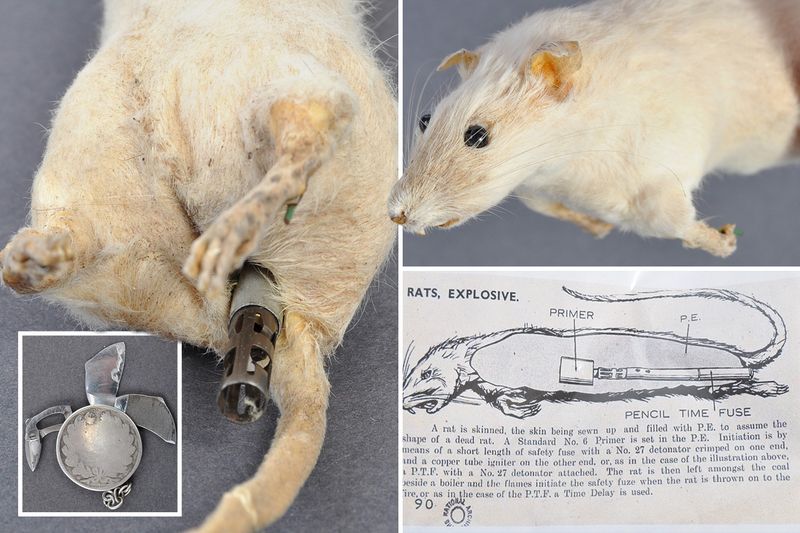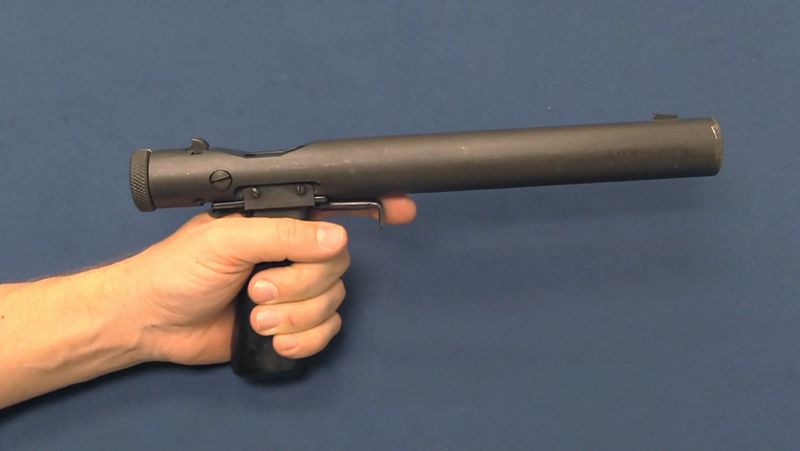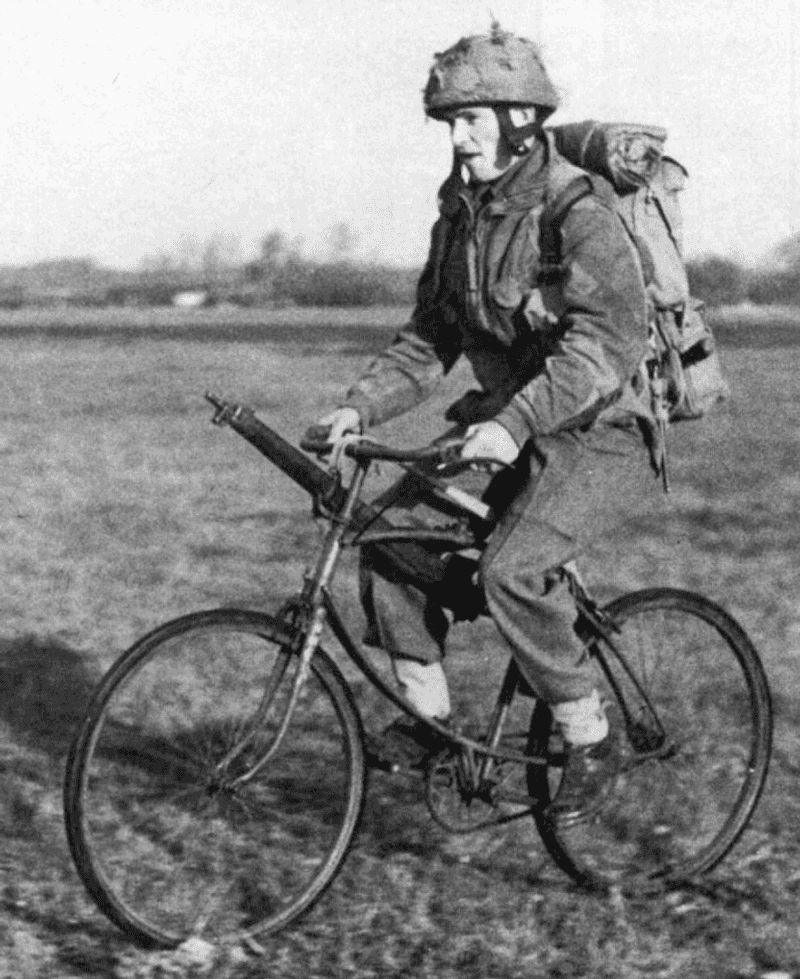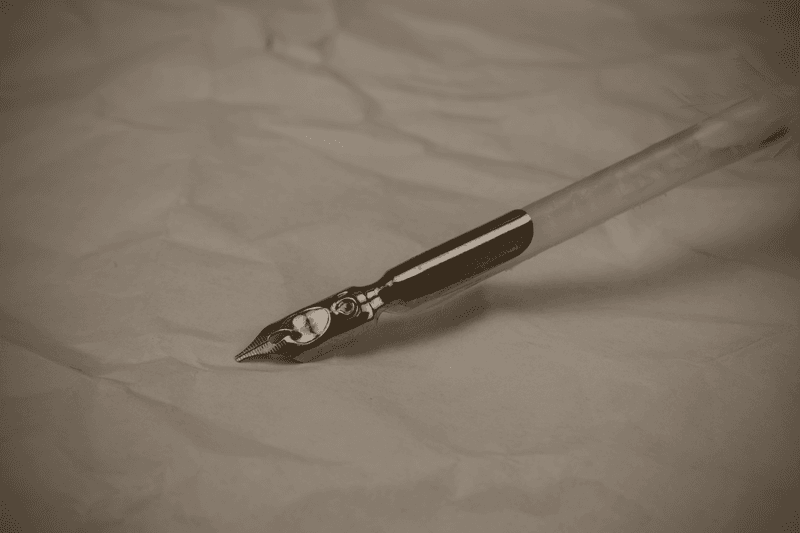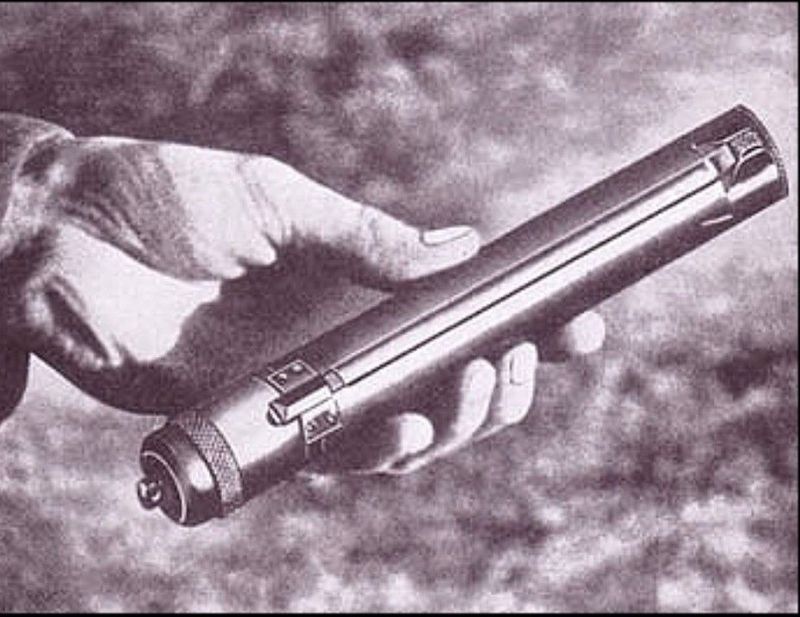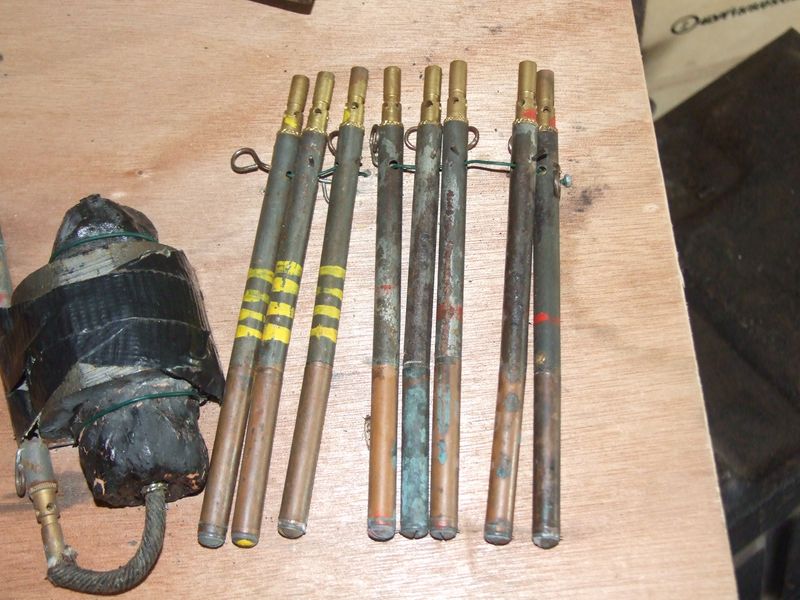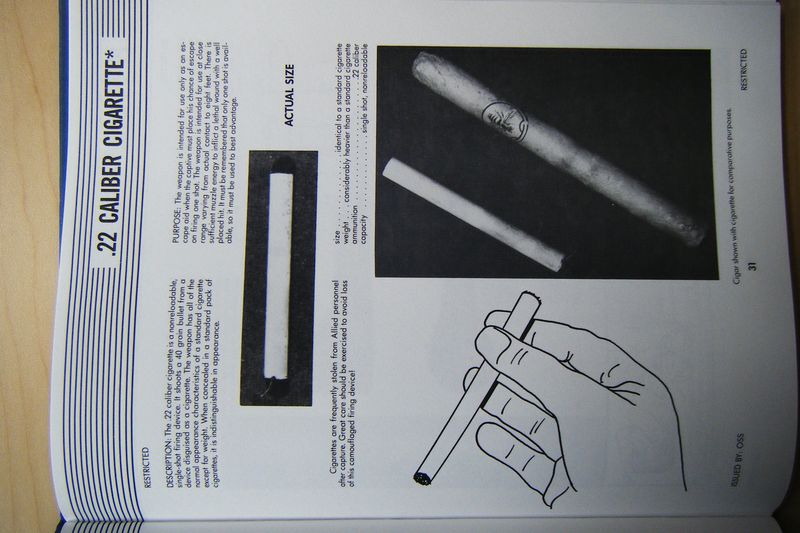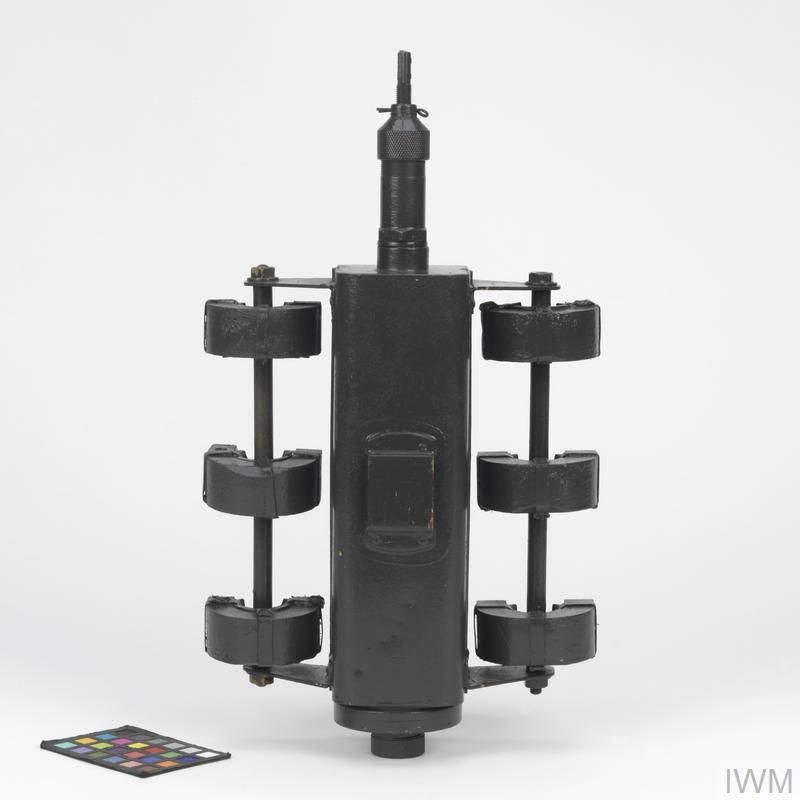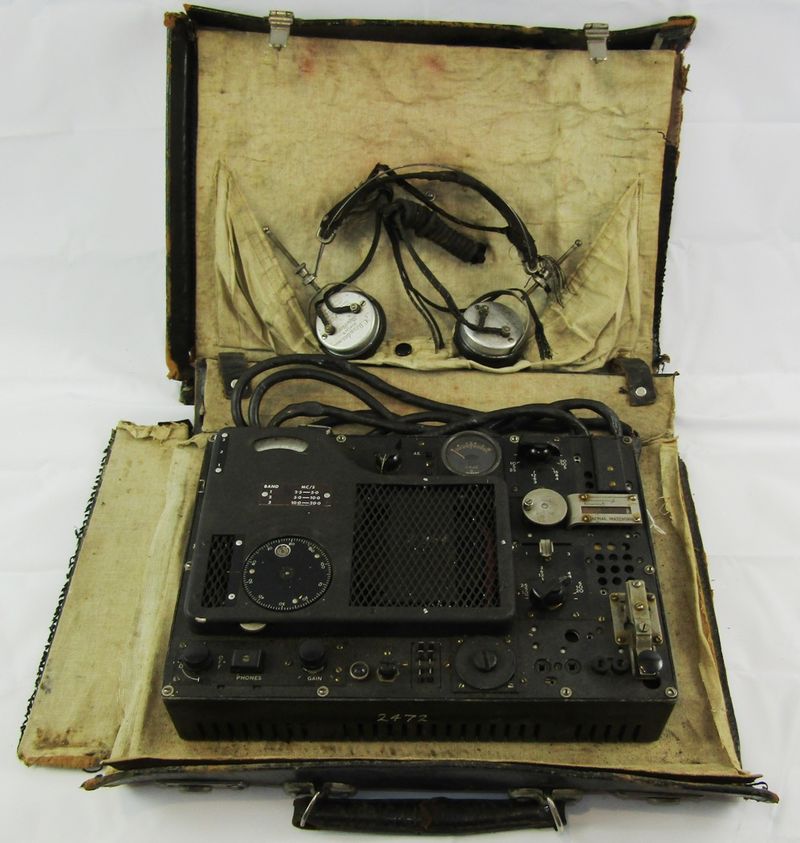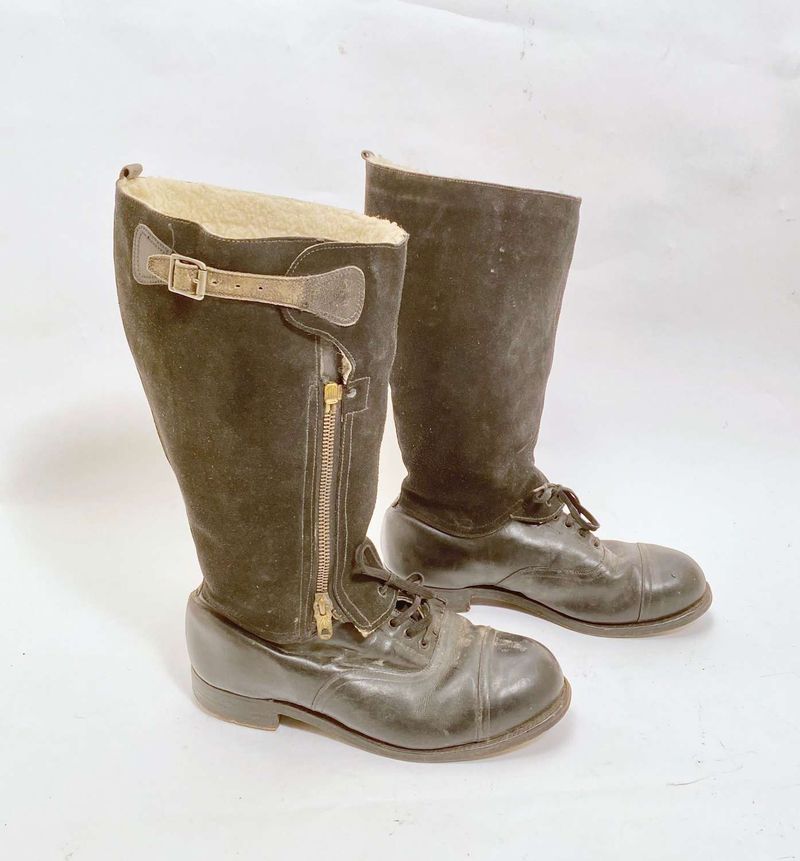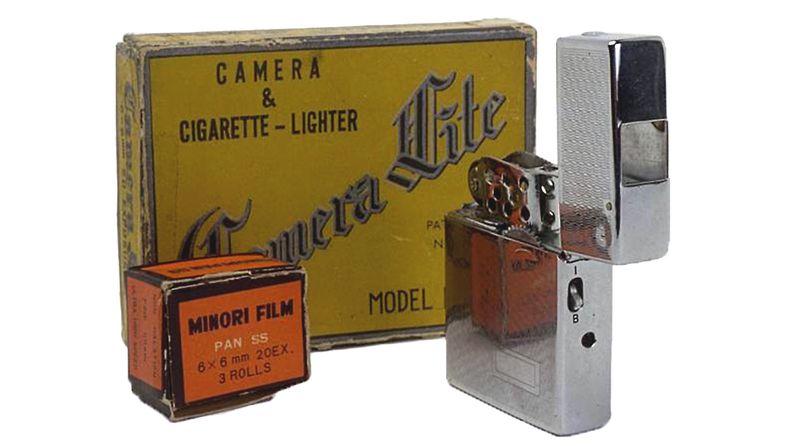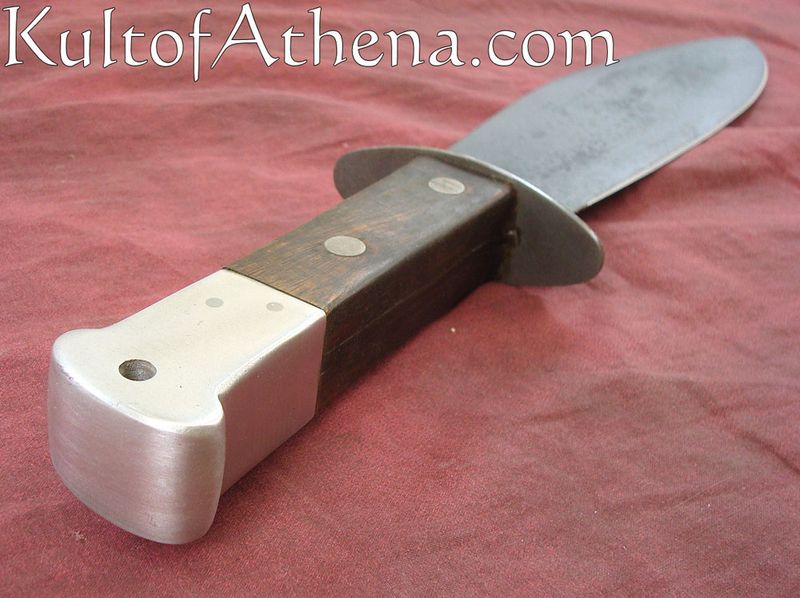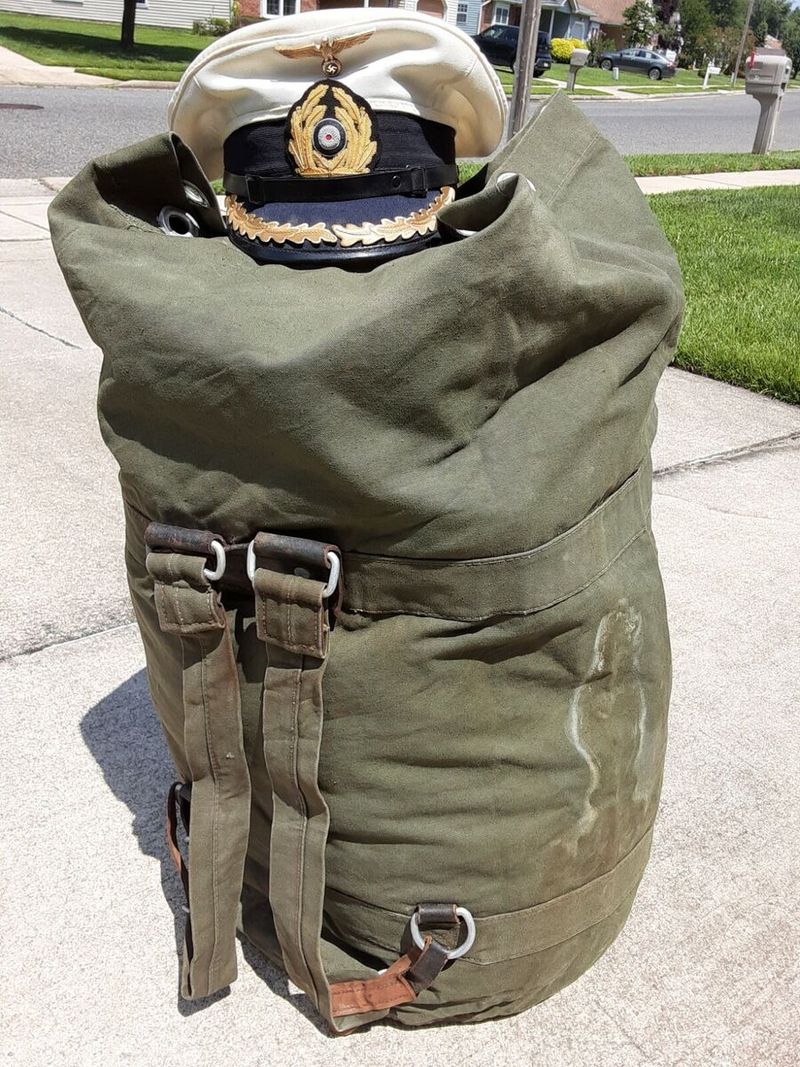World War II was a time of great innovation, especially in the realm of espionage. The gadgets developed for undercover operations during this era could rival anything seen in a James Bond film. From weapons disguised as everyday items to unique communication devices, these tools were crucial in gathering intelligence and sabotaging enemy operations. Here are 15 fascinating spy gadgets from WWII that truly put James Bond’s fictional devices to shame.
1. Exploding Rat Bombs 💥🐀
During WWII, ordinary rats were transformed into deadly weapons. British forces hollowed out the insides of deceased rats, filling them with plastic explosives. Placed strategically near German coal furnaces, these rat bombs were designed to detonate when shoveled into the fire. The mere threat of these bombs forced German forces to spend countless hours inspecting every rodent in their factories. This psychological warfare not only caused physical damage but also significantly disrupted enemy operations. The ingenuity behind this device highlights the lengths to which resistance fighters went to sabotage Nazi efforts.
2. The “Welrod” Silenced Assassination Pistol 🔫
The Welrod pistol was a masterpiece of covert engineering. This nearly silent firearm was used by resistance fighters across Europe. It was so quiet that the sound of the bolt cycling was louder than the shot itself. Designed for stealth, the Welrod could be easily disassembled and hidden within a coat pocket, making it an ideal tool for clandestine operations. Its presence was shrouded in secrecy, yet its impact on critical missions was profound. By enabling silent eliminations, the Welrod played a crucial role in many successful sabotage and assassination missions.
3. The “Bicycle Bomb” 🚴💣
Ingenious and deceptively simple, the Bicycle Bomb was a tool of surprise. Resistance fighters in occupied France employed this modified bicycle, which contained a hidden tube of explosives within its frame. When the rider reached their destination and stopped, the bomb was set to detonate. This device was employed to great effect against Nazi patrols. The ability to transform an ordinary means of transport into a weapon underscored the creativity and resourcefulness of the resistance. These bikes became symbols of rebellion, turning everyday objects into instruments of warfare.
4. Coal Bombs 🪨🔥
In the cunning world of espionage, even coal became a weapon. Coal bombs were explosives cleverly shaped like coal lumps. They were discreetly tossed into German coal supplies, waiting to be fed into steam engines. Upon ignition, the result was catastrophic engine failure. Not only did this method disrupt transportation and communication, but it also instilled fear and paranoia. This tactic later inspired scenes in James Bond movies, showcasing the enduring legacy of WWII spy ingenuity. The coal bomb is a testament to how ordinary items were repurposed as tools of war.
5. Invisible Ink Made from Semen ✉️🤯
In the shadowy world of espionage, invisible ink was a spy’s best friend. British agents took secrecy to a new level with ink made from semen. This unconventional choice was due to its ability to remain invisible until exposed to UV light, similar to modern methods. While less awkward alternatives like milk or lemon juice existed, the use of semen was a testament to the spies’ creativity and resourcefulness. This quirky method of communication played a vital role in passing secrets across enemy lines, proving that innovation knows no bounds.
6. The “Sleeve Gun” (Single-Shot .22 Pistol) 👔🔫
Compact and discreet, the Sleeve Gun was a spy’s hidden ally. This tiny, single-shot .22 pistol was ingeniously strapped to the forearm, concealed beneath a sleeve. With a simple wrist flex, the weapon could be fired, providing a last-resort means of defense. Used by British spies as a final line of protection, the Sleeve Gun’s concealable design made it invaluable for undercover operations. Its presence was often unknown until the critical moment, offering a tactical advantage in dangerous situations. This innovation underscored the importance of stealth and surprise in espionage.
7. The “Exploding Camel Dung” Bomb 🐪💩
In the vast deserts of North Africa, even camel dung became a weapon of war. The Allies cleverly disguised plastic explosives as animal droppings, strategically placing them to target Nazi vehicles. This unconventional approach not only caused destruction but also instilled fear and caution among German troops, who began avoiding all camel dung. The psychological impact of this tactic was profound, demonstrating the creative lengths to which forces would go to achieve victory. This unusual method highlighted the unpredictable nature of warfare and the importance of thinking outside the box.
8. The “Pencil Detonator” ✏️💣
The Pencil Detonator was a classic example of sabotage tools hidden in plain sight. This innocent-looking pencil contained a time-delay fuse, designed to ignite when the graphite core burned down. Used extensively in sabotage missions across Europe, it allowed operatives to set explosions at precise moments, causing maximum disruption. The simplicity of its design masked its destructive potential, making it a favorite among resistance fighters. This tool exemplified the art of disguise, turning everyday objects into instruments of chaos and highlighting the ingenuity of wartime espionage.
9. The “Cigarette Pistol” 🚬🔫
Deceptively lethal, the Cigarette Pistol was the epitome of close-quarters assassination tools. This single-shot .22 firearm was ingeniously hidden within a cigarette, designed for point-blank executions. While its use was limited to just one shot, the element of surprise provided a significant advantage. Spies had to ensure their aim was true, as there was no room for error. The Cigarette Pistol’s compact and inconspicuous design made it a valuable asset in covert operations, allowing agents to carry out their missions without arousing suspicion. It remains a testament to the ingenuity of WWII espionage.
10. The “Limpet Mine” (Magnetic Underwater Bomb) 🧲🌊
The Limpet Mine was a formidable underwater weapon used to great effect during WWII. Magnetic and designed to attach to the hulls of enemy ships, these mines were deployed by divers or agents, set to explode hours later. Their most famous use was in the sinking of the Tirpitz, Germany’s feared battleship. This weapon demonstrated the effectiveness of underwater sabotage, altering naval warfare tactics. Its ability to cripple enemy vessels without direct confrontation showcased the strategic innovation of wartime engineering, leaving a lasting impact on military operations.
11. The “Briefcase Radio” 💼📻
Ingenious and discreet, the Briefcase Radio was a lifeline for resistance fighters. This fully operational spy radio was cleverly disguised as an ordinary suitcase, allowing operatives to communicate without detection. Its portability and inconspicuous appearance made it an essential tool in the fight against the Axis powers. Resistance cells throughout Europe relied on these radios to coordinate efforts, share intelligence, and plan operations. The Briefcase Radio exemplified the innovative spirit of wartime espionage, turning an everyday object into a powerful weapon of communication and resistance.
12. The “Escape Boot” 👢🔧
Ingeniously designed for survival, the Escape Boot was a pilot’s best friend. British aviators wore these boots, which featured a hidden knife in the heel. If captured, they could cut the boots down into civilian-style shoes, aiding in escape efforts. Additionally, some boots included compasses hidden in the buttons, providing navigational aid. This innovative footwear underscored the importance of adaptability and resourcefulness, ensuring pilots could evade capture and return to friendly territory. The Escape Boot remains a symbol of ingenuity and the relentless spirit of those who refused to be prisoners of war.
13. The “Cigarette Lighter Camera” 🔦📸
The Cigarette Lighter Camera was the perfect tool for clandestine photography. This tiny camera, cleverly concealed within a Zippo-style lighter, allowed spies to document Nazi troop movements without detection. Its discreet design enabled operatives to carry it unnoticed, capturing crucial intelligence on enemy activities. The ability to blend in while gathering sensitive information was invaluable in wartime espionage. The Lighter Camera exemplified the creativity and technological advancements of the time, providing a unique solution for undercover surveillance and intelligence-gathering missions.
14. The “Silent Killing Knife” 🔪😶
Stealth and lethality combined in the Silent Killing Knife, a formidable tool used by British Commandos. Known as the “Smatchet,” this knuckle-duster knife was designed for silent takedowns, essential for covert operations. Its unique design allowed for rapid, quiet eliminations, making it a critical asset in close-quarters combat. The Smatchet’s practicality and effectiveness made it a favored weapon among commandos. Its role in enabling silent infiltration and extraction missions highlights the importance of specialized tools in warfare, where surprise and precision often determine success.
15. The “Submarine Sleeping Bag” 🛌🌊
Infiltration required innovation, and the Submarine Sleeping Bag was a prime example. This waterproof, insulated bag allowed spies to hide in freezing water during beach infiltrations, crucial for D-Day preparations. Its design ensured operatives could remain concealed and survive harsh conditions, providing a strategic advantage in surprise attacks. The Submarine Sleeping Bag showcased the lengths to which spies went to remain undetected and carry out their missions. This invention highlighted the ingenuity and adaptability of wartime espionage, enabling allies to execute critical operations under challenging circumstances.
